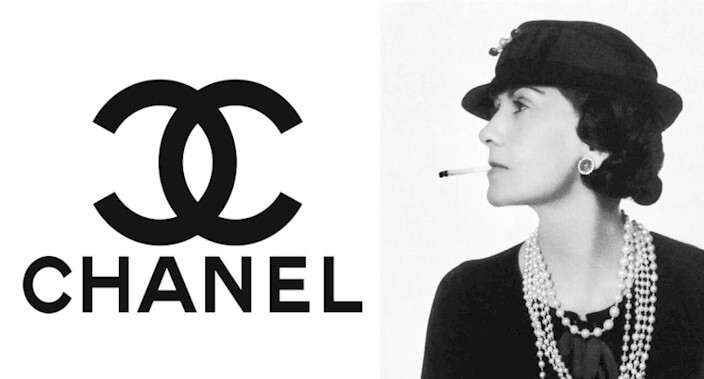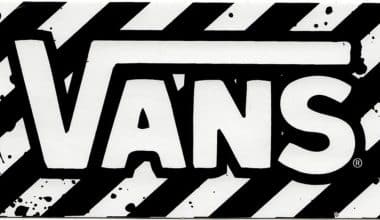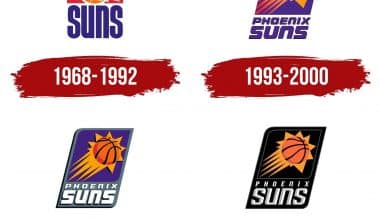Who Owns Chanel? For starters, Chanel has been privately owned by the Wertheimer family for nearly a century and is one of the few luxury fashion houses not owned by conglomerates LVMH or Kering. But who exactly are they? Unlike their competitors, Bernard Arnault and François Pinault, the Wertheimers have been dubbed “fashion’s quietest billionaires.” Because they are extremely private, little information about their personal lives or business dealings is made public.
But here’s what we know about who owns Chanel and its history.
Key Takeaways
- French luxury label Chanel is headed by Alain Wertheimer, who serves as chairman.
- His brother Gerard is in charge of the company’s timepiece production, and the two of them are co-owners.
- His great-grandfather, Pierre Wertheimer, co-founded the company with Gabrielle “Coco” Chanel.
- Chanel’s public face, Karl Lagerfeld, passed away in February 2019 at the age of 85. For more than three decades, he led the company’s creative efforts as its director.
Who Owns Chanel: Overview
1922
At the horse races in 1922, Théophile Bader, founder of the upscale department store Galeries Lafayette, introduced Coco Chanel to Pierre Wertheimer. Pierre, a renowned breeder, had recently inherited Bourjois, France’s largest and most successful cosmetic and fragrance company, from his father, while Coco had developed Chanel No. 5 with famous perfumer Ernest Beaux just a year before.
The signature scent was only sold in Chanel’s Paris boutiques, but Coco wanted to make it available to more of her clientele, so the three new friends struck a deal: Pierre formed Parfums Chanel, which would finance the production, marketing, and distribution of Chanel No. 5, Galeries Lafayette would sell it (giving Bader 20% ownership), and Coco would license her name to it (giving her 10% ownership). Pierre and Coco’s relationship, on the other hand, quickly deteriorated.
Coco began to resent their agreement as sales increased and Chanel No. 5 became her best-selling creation. Coco hired an attorney and attempted to renegotiate the terms because she believed Pierre was exploiting her creative talents for his own gain. She was unsuccessful, and Pierre retained control of the company.
1941
Coco tried again in 1941, at the start of WWII. She saw an opportunity when the Wertheimers, who were Jewish, were forced to flee to the United States of America to escape the Nazi regime. Citing new occupation regulations that mandated the transfer of all Jewish-owned businesses to French-Aryan hands, Coco wrote a letter to the Nazi Party in an attempt to finally gain control of Parfums Chanel.
Coco was once more unsuccessful. Pierre had already appointed a proxy, an Aryan family friend named Félix Amiot, to run the business in his absence. Coco herself was forced into exile by the end of the war. She closed Chanel and relocated to Switzerland after being accused of Nazi sympathies.
1954
Despite their bitter feud, Coco asked Pierre for money again in 1954, when she returned to France to reopen her atelier. In exchange, he obtained the rights to all of Chanel’s products, not just the perfumes. Pierre consolidated his power by later purchasing Bader’s 20% stake in Parfums Chanel.
Pierre died in 1965, leaving his son Jacques in charge of Chanel and the family’s other businesses. When Coco died six years later, Jacques bought the remaining 10% of Chanel, making him the sole owner. He was uninterested in fashion and instead concentrated his efforts on horse breeding and racing, which hurt Chanel’s sales and reputation. Alain and Gérard, his sons, were only 25 and 23 years old when they convinced the board to let them take over Chanel in 1974. They worked together to resurrect the failing fashion house, most notably by hiring Karl Lagerfeld.
1996
When their father died in 1996, Alain and Gérard were officially named co-owners of Chanel, making them among the wealthiest people in France and the world (their combined net worth is around $49.2 billion). They have divided the responsibilities so far. Alain is the chairman from the United States, and Gérard is the head of the watch division from Switzerland.
Aside from that, the brothers remain a mystery.
Who Owns Chanel: A Luxury Empire Revived from the Ashes
Alain and Gerard Wertheimer, 72 and 70 years old, are now two of France’s ten wealthiest billionaires. Their fortune has grown many times over due to large acquisitions and businesses, of which Chanel is just one. Their total assets are currently $49.2 billion, divided equally between the two brothers.
The Wertheimer family is extremely private and rarely speaks to the press about their wealth, business, family life, relationships, or even their hobbies. They never even attend the opening of a Chanel store, and when they do, they drive their car and sit in rows four or five. The New York Times called them “the most discreet billionaires in the fashion world.”
Rising from the Ashes
After their father, Jacques Wertheimer, died in 1974, Alain and Gerard Wertheimer took over as co-owners of the Chanel brand. Alain is the President of Chanel, and Gerard is in charge of the watch division. They are the 110-year-old company’s third generation.
Chanel was gradually depleted at the time, leaving only the perfume brand sold in a pharmacy and an official store. Alain quickly revitalized the elegant fashion house by expanding the ready-to-wear segment and regaining market share to lead the luxury perfume sector. His most important choice was to hire German designer Karl Lagerfeld as Art Director.
Lagerfeld said at the time, “When I joined Chanel, it was a sleeping beauty in the woods.'” Not even a pretty face. It’s draining. So it’s my job to resurrect a dead woman.”
Alain dubbed a “marketing genius,” knew how to use Lagerfeld’s creations to create a high fashion image, popularizing the Chanel brand within elite circles and throughout the rest of the world.
Read Also: Who Owns Walmart in 2023: Networth & Background Story
Kristen Stewart, Cate Blanchett, Audrey Tautou, Nicole Kidman, Gisele Bündchen, Lily-Rose Depp, Cindy Bruna, Romy Schonberger, Rianne van Rompaey, Sigrid Agren, and singer Pharrell Williams are among Chanel’s celebrity clients. Chanel has become a “giant” in the fashion industry, with countless shops and boutiques around the world thanks to the combination of celebrity and exclusive luxury.
Chanel is also well-known for its beauty brands Chanel Beauty and Chanel Perfume.
Strategic Perspective
Chanel always follows the principles of never discounting and never selling on social networks, regardless of competitors, to keep itself apart from other fashion brands in the capital market.
The House is well-known for its simple yet sophisticated, classic, and modern style, which combines products inspired by the past and its bold brand identity, such as tweed, with fine details such as tied bows and chains. This reinforces the brand’s motto: “Fashion can fade, but style lasts forever.” Chanel does not create products based on current trends but on consistency in style, spirit, and quality, allowing customers to recognize them without seeing the logo.
Alain and Lagerfeld focused on exclusive products and devised a different marketing strategy than other brands to maintain brand value, from price to promotion.
First and foremost, Chanel never lowers its prices. While other high-end fashion brands, such as Prada, Versace, Valentino, and Burberry, launch seasonal discount campaigns to attract customers, Chanel only adjusts prices based on market conditions and does not change the basic price. This is how Chanel distinguishes itself in the luxury industry.
Read Also: IS APPLE PAY SAFE? What are the Downsides?
Chanel developed more affordable lines to meet the needs of middle-class customers and developing markets such as Asia to increase sales. With 36 stores in Japan, 15 in Korea, and 11 in China, Chanel nearly controls the entire market with affordable lines of beauty products such as lip balm, skincare, make-up, and accessories such as eyeglasses and watches.
Second, Chanel only conducts a little business on social media. In recent years, the company has spent more than a billion euros on international expansion and online advertising campaigns. On the other hand, Chanel sees online sales as something other than a viable sales channel, particularly for high-end fashion items, jewelry, accessories, cosmetics, or watches. Chanel, according to Alain, wants to reduce the phenomenon of counterfeit and fake products while also protecting the brand’s value.
Instead, Facebook, Instagram, and Twitter account only provide the most recent information, fashion events, or newly released collections to raise brand awareness. Customers will then come directly to the store for advice, where Chanel has carefully invested in the care team to provide the best customer experience possible.
With a brand value of $13.2 billion as of 2021, Chanel is one of the world’s leading luxury fashion brands, trailing only Louis Vuitton ($47.2 billion), Gucci ($22.6 billion), and Hermès ($21.6 billion).
Currently, the Alain and Gerard brothers own not only the Chanel brand but also several well-known vineyards throughout Europe, including those in Bordeaux, Napa Valley, and the island of Porquerolles near the southernmost tip of France’s Côte d’Azur.
Who Owns Chanel: Related Articles
- MOST EXPENSIVE RESTAURANT IN THE WORLD: Top 17+ Luxurious Restaurants 2023
- Luxury Bag Brands: Top 2023 Luxury Handbag Brands List (Updated)
- BRAND PERSONALITY: Definition and Examples
- CHANEL LOGO: What it Symbolizes, Meaning, History.
- FENDI LOGO: Meaning, Evolution & History






